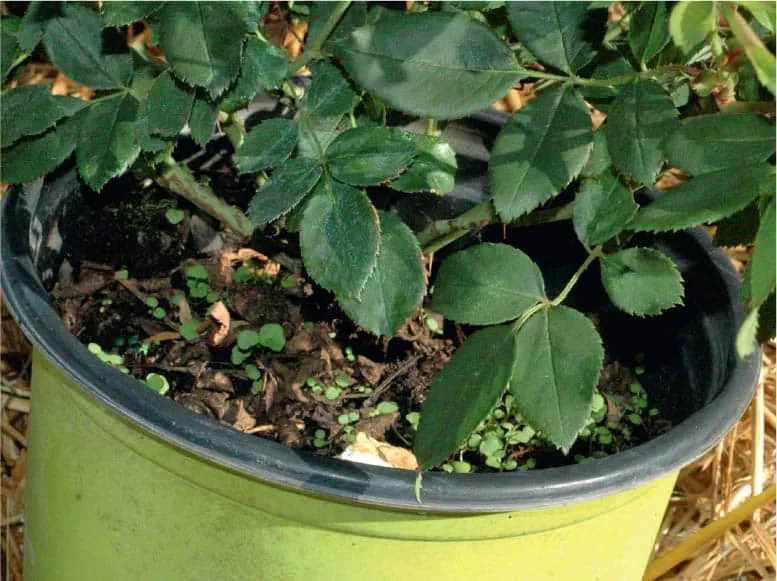
- 192 pages
- English
- ePUB (mobile friendly)
- Available on iOS & Android
About This Book
Weed-Free Gardening presents a clear and easy-to-implement plan of attack to get even the most tenacious weeds under control without the need for potentially harmful synthetic herbicides. Let's face it: weeding is far from a homeowner's favorite chore. But not everyone can afford to hire a landscape crew to keep the weeds at bay, and spraying chemical herbicides isn't a smart solution for eco-conscious homeowners or pet parents. If that's the case for you, the weed control prevention and control strategies outlined here by author Tasha Greer will have you growing flowers, vegetables, shrubs, and trees with little to no weed competition. Tasha's organic approach hands you methods for both preventing weeds early in the growing season and managing weedy intruders year-round. By following the practical guidance found in Weed-Free Gardening, you'll:
- Control annual weeds by disrupting their natural lifecycle
- Learn the whys, hows, and whens of weed-inhibiting mulching techniques
- Eliminate deep-rooted perennial weeds by eradicatingthem at their source
- Meet the best and most effective weeding tools available to homeowners
- Discover many ways to keep weeds out of the vegetable garden while ensuring healthy and productive soil
- Implement a practical plan to gain long-term control over weeds
In addition, you'll find resources for weed identification, tips for getting rid of invasive plants, useful ideas for handling areas completely overtaken by weeds, and dozens of "weed hacks" to make life in the garden so much more beautiful. Weed-Free Gardening is here with a plan to save you time, money, and energy, and help you fall in love with your garden all over again. If landscape beds overrun with weeds are making you want to give up on your garden, hope is finally here!
Frequently asked questions
Information
PART ONE
WEED PREVENTION

- We garden where other plants were already established without removing them or actively preventing their return.
- We expose existing seeds stored in the soil with our tilling, harvesting, and weeding practices.
- We leave soil unprotected by not keeping it densely planted or sufficiently mulched.
- We apply too much fertilizer to the surface of soil, which in turn acts like a free buffet for fast-growing, nutrient-hungry weeds.
- We water the top few inches (approximately 7.5 cm) of soil, too often creating ideal conditions for running or self-layering plants to spread.
- We water too shallow and too infrequently for our moisture-loving plants to set deep roots and hold their ground against weeds.
- We don’t address drainage problems before we plant and end up with overly dry or wet soil that serves as a breeding ground for weeds that arrive to correct those situations.
- We try to grow plants in unsuitable locations and inappropriate climate conditions or neglect them, then assume it’s the weeds’ faults when our plants don’t grow.
- We don’t realize descriptions like “easy to grow” or “fast-growing” are code for “may become a weed unless you control the spread.”
- We bring in seeds, soil, potted plants, and other purchases that contain weeds and sow our own problem plants.
- We fail to adjust our gardening practices when changes in our environment necessitate it.
Three Key Weed Prevention Questions
- 1) How did these weeds get here?
- 2) Can I prevent them from spreading or showing up again?
- 3) How will I fill or protect this niche going forward?



How Weeds Get into Our Landscapes
- 1) They are already present in the soil.
- 2) They are brought in by natural forces, such as pets, wildlife, wind, and water flow or colonization (spreading by rhizomes, solons, runners, layering, and self-sowing).
- 3) They come in with seed/plant purchases or gifts.


Table of contents
- Cover
- Title Page
- Contents
- Introduction: The War on Weeds, Why It Can’t Be Won, and How to Make Peace in the Garden
- Part One: Weed Prevention
- Part Two: Maintenance
- Part Three: Reconciliation
- Part Four: Creating Peace in the Garden
- References
- About the Author
- About the Illustrator
- Acknowledgments
- Index
- Copyright